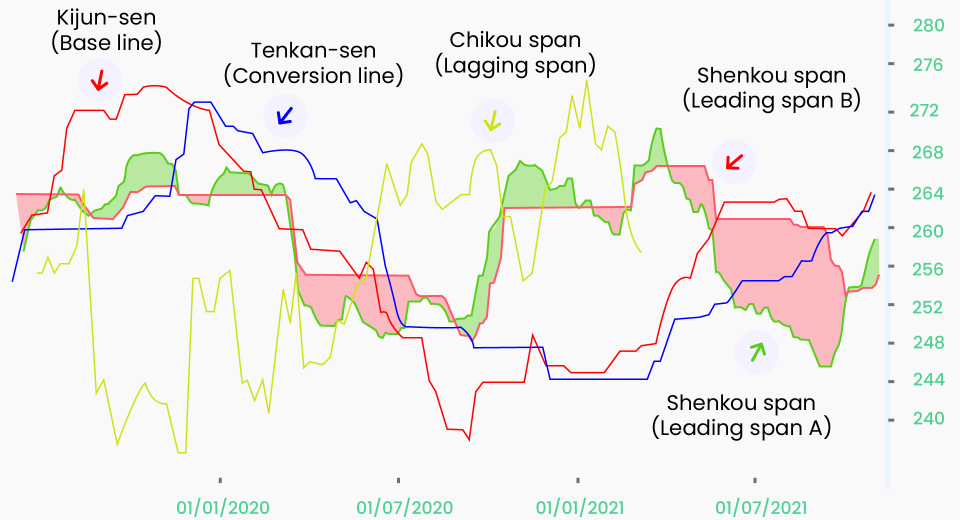Beginner’s Guide to Crypto Trading Strategies

Been wondering whether you should add cryptos to your trading portfolio? The cryptocurrency market, valued at more than $1 trillion in March 2023, has matured over the years. There are over 20,000 coins in circulation and digital currencies have grabbed the attention of new and seasoned traders alike. Here’s a simple guide to help you get started with crypto trading.
Why Trade Cryptocurrencies?
The cryptocurrency market is still in a nascent stage which makes it highly volatile. A coin can gain as much as 25% in a single day. That kind of volatility is unprecedented in the financial markets and serves as a powerhouse of trading opportunities. However, high volatility also magnifies the risk of holding digital coins and traders of all experience levels must use good risk management techniques.
Traders are attracted to crypto trading because of the unique benefits it offers:
- Digital currencies are seen as a hedge against inflation and fiat currency fluctuations.
- The cryptocurrency market is open 24×7, which provides more opportunities for trading.
- Since these decentralised assets behave differently from traditional asset classes, they have become a part of well-diversified portfolios.
- The crypto market offers exposure to advancements in blockchain technology.
- The cryptocurrency market has low entry barriers, as coins may start at a price of one-thousandth of a dollar.
- Since the crypto market is still evolving and only lightly regulated, the scope of outsized gains is higher than with traditional assets.
What You Need to Know Before You Start Crypto Trading
Coin Value
Cryptocurrencies do not have inherent value or a tangible asset backing. They gain their value from the strength of the underlying blockchain.
Regulation and Compliance
Some nations impose higher taxes on crypto gains, while others still consider crypto trading illegal. So, you must check the regulations in your country before entering the crypto market.
Crypto Owning and Trading
If you wish to buy and hold cryptos, you’d need to create a digital wallet that is secured through public and private keys. You can also get exposure to cryptos by trading CFDs (contracts for difference). You can trade crypto CFDs directly from your live trading account, without the need to set up a digital wallet.
Most Popular Coins to Trade
Bitcoin (BTC)
Introduced to the public in 2009, Bitcoin is the world’s largest cryptocurrency by market capitalisation. Its price was only 8 cents in 2010 but was trading at around $23,000 in March 2023.
It is by far the most popular cryptocurrency. More than $21 billion worth of Bitcoin is typically traded in a single day and over 44 million crypto wallets include this digital coin.
Ether (ETH)
This coin gets its value from the Ethereum blockchain, which introduced smart contracts that has made decentralized finance (DeFi) and other applications possible. Ether was valued at under $1 when it was created in 2015 and was more than $1,500 in March 2023.
Tether (USDT)
Launched as RealCoin in July 2014, this coin was rebranded as Tether in November of that year. Tether is what is known as a cryptocurrency stablecoin, as it is pegged to the US dollar and is 100% backed by Tether’s reserves.
Ripple (XRP)
Ripple gets its value from the blockchain-based payment settlement system that works like the SWIFT system for international transfers. Several leading banks from around the world have joined Ripple’s global network, including Bank of America, Canadian Imperial Bank of Commerce, Spain’s BBVA, Israel’s Bank Leumi and India’s Axis Bank.
Top Crypto Trading Strategies for Beginners
Scalping
Traders open many small positions with the intension of accumulating tiny gains during a trading session. A single position may be open for about 30 seconds and up to a few minutes. It is a high frequency trading strategy.
Intra-Day Trading
Also called day trading, this involves entering and exiting crypto positions within a single trading day. A trading day in crypto trading is 24 hours, versus 7 hours for traditional financial assets.
Swing Trading
This technique is used by more patient and alert traders. A trading position may last from a few days to a few weeks. As the digital currency market tends to be volatile, swing trading requires you to keep a watchful eye on price movements and shifting market sentiment.
Dollar Cost Averaging
This is suited for cryptos that seem to be trending. It involves investing fixed or incremental amounts in various cryptos over a pre-decided period at pre-planned intervals. The belief is that short-term highs and lows get smoothed out through the trading duration. Fundamental analysis is key to this trading strategy.
News Trading
News like a company accepting cryptos as payments or even a Tweet by Elon Musk can cause fluctuations in coin prices. News of a country placing restrictions, blockchain forks, and acceptance of crypto in exchanges move the markets. You can target these opportunities if you have the time to stay abreast of the latest happenings.
Trading Indices
Cryptocurrency indices are a basket of coins chosen on the basis of a defined criterion. An index holds a portfolio of coins offering traders the opportunity to gain exposure to multiple digital currencies with every trade.
The S&P has more than 12 index-related instruments that serve as benchmarks of the performance of crypto markets.
To Sum Up
- The cryptocurrency market is volatile, presenting the possibility of outsized gains.
- Risk management is crucial for crypto trading, given the high volatility.
- You can set up a crypto wallet to own coins or simply trade them via CFDs from your live trading account with a broker.
- Crypto coins derive their value from the underlying blockchain technology.
- Scalping, intra-day trading, and swing trading are some of the most popular crypto trading strategies.
The cryptocurrency market allows traders to trade indices as well.
Disclaimer:
All data, information and materials are published and provided “as is” solely for informational purposes only, and is not intended nor should be considered, in any way, as investment advice, recommendations, and/or suggestions for performing any actions with financial instruments. The information and opinions presented do not take into account any particular individual’s investment objectives, financial situation or needs, and hence does not constitute as an advice or a recommendation with respect to any investment product. All investors should seek advice from certified financial advisors based on their unique situation before making any investment decisions in accordance to their personal risk appetite. Blackwell Global endeavours to ensure that the information provided is complete and correct, but make no representation as to the actuality, accuracy or completeness of the information. Information, data and opinions may change without notice and Blackwell Global is not obliged to update on the changes. The opinions and views expressed are solely those of the authors and analysts and do not necessarily represent that of Blackwell Global or its management, shareholders, and affiliates. Any projections or views of the market provided may not prove to be accurate. Past performance is not necessarily an indicative of future performance. Blackwell Global assumes no liability for any loss arising directly or indirectly from use of or reliance on such information herein contained. Reproduction of this information, in whole or in part, is not permitted.




